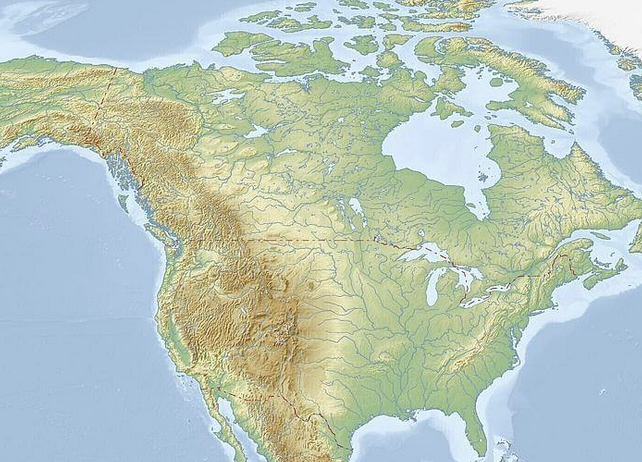To Missionize is to Genocide by Pope Orders
The Peopleize Press – Exposing the brutal truths of colonial religious history
Here at The Peopleize Press, we are committed to peeling back the layers of polite language to expose the raw, often brutal, truths of colonial religious history and its ongoing colonial consequences.
Genocide is the intentional destruction of a national, ethnic, racial, or religious group, in whole or in part.
To Missionize means to actively seek to convert people to a particular religion, set of beliefs, or ideology. It involves organized efforts to spread a faith or doctrine to new regions or populations without invitation by local population.
Few phrases are as sanitized and deceptively benign as “missionary work.” It conjures images of benevolent figures offering spiritual solace. But for indigenous and local communities across the globe, from the so called Americas, Africa, Oceania, and beyond, the arrival of the missionary was never by invitation. It was the opening act of a cultural and physical genocide, a Trojan horse carrying the instruments of their destruction, all sanctioned by the highest authorities of christian church and colonial state.
The Legal and Spiritual Framework
The legal and spiritual framework for this genocide was established centuries before. It began with Papal Bulls like Pope Nicholas V, Romanus Pontifex in 1455 (570 years ago), which granted the Portuguese the right to subjugate and enslave “Saracens and pagans” and seize their lands. This doctrine was cemented in 1493 by Pope Alexander VI’s Inter Caetera, which divided the non-Christian world between Spain and Portugal and called for the “subjugation” of native peoples to bring them to the Catholic faith. This formed the core of the “Doctrine of Discovery,” the pernicious legal principle that any land not inhabited by Christians was terra nullius nobody’s land and therefore free for the taking, regardless of the actual presence of indigenous nations who had lived there for millennia.
Key Doctrines of Conquest
-
In 1452 (573 years ago), Pope Nicholas V issued the bull Dum Diversas, granting Portugal the right to “invade, search out, capture, vanquish, and subdue all Saracens and pagans whatsoever and to reduce their persons to perpetual slavery.”
-
This was followed in 1455 (570 years ago) by Pope Romanus Pontifex, which extended Portugal’s monopoly and sanctified seizing non-Christian lands.
Critically, these papal bulls (Vatican state law) have never been formally revoked. Within the Vatican’s Catholic Church legal system, canon law is considered final and immutable. As an absolute monarchy where the Pope is both sovereign and supreme legislator, his decrees once issued, stand in perpetuity unless explicitly nullified by a successor. This leaves these doctrines of conquest and dispossession as a lingering, dormant part of the Church’s legal foundation.
-
The most infamous application was the Spanish Requerimiento of 1513 (512 years ago). It was read aloud in Spanish to local natives (who did not speak Spanish), it demanded immediate submission to the Pope and Spanish Crown. The financial incentive for the Church was immediate and vast. The Papacy claimed the “Patronato Real,” granting it a staggering one-fifth (the “Quinto”) of all precious metals and wealth extracted from the Americas. By the end of the 16th century, this translated to millions of pesos of gold and silver flowing directly into the Vatican’s coffers, financing the construction of St. Peter’s Basilica and cementing the Church’s temporal power, all sanctified by the un-revoked bulls.
-
The Inquisitor’s Intolerance: The Machinery of Purity and Control Parallel to external holy war was internal purification. The Inquisition, established in Spain in 1478, created homogenous society through state-sanctioned terror. This drive for purity manifested in limpieza de sangre (purity of blood) statutes appearing in Toledo in 1449 (576 years ago), creating a legal hierarchy that privileged “Old Christians” and systematically excluded converts from other faiths and their descendants based solely on ancestry.
-
The Sovereign’s Absolute Power: The State of Exception Abroad Absolutist state theory argued the sovereign must hold absolute power to prevent chaos. In colonies, this absolutism ran wild. The most brutal expression was slave codes. The French Code Noir 1685 (340 years ago) defined enslaved people as “movable property” a category applied to Black Africans and their children, inherited through the mother, who could be whipped, branded, or executed.
-
The South Carolina Slave Code of 1740 (285 years ago) defined slaves as “chattel property,” cementing the definition of a slave as a person of African descent, permanently alienated from rights, lineage, and humanity. Plantation owners became sovereigns in their domains, backed by state power that defined an entire race as property. The French colony of Saint-Domingue (Haiti) alone, operating under this code, produced 40% of Europe’s sugar and 60% of its coffee by the 1780s, making it the most profitable colony in the world and generating vast fortunes for the French monarchy and bourgeoisie.
Let us be unequivocal: To missionize is to commit genocide by definition.
This is not hyperbole. We need only look to the United Nations’ 1948 Convention on the Prevention and Punishment of the Crime of Genocide. It is not solely the mass killing of members of a group. It also includes causing serious bodily or mental harm, deliberately inflicting conditions of life calculated to bring about its physical destruction, and crucially “forcibly transferring children of the group to another group.”
Historical Examples of Genocidal Missionizing
For centuries, this was not a side effect; it was the primary strategy. Here are some examples to help illustrate.
-
The Indian Residential School system in Canada (operated from the 1830s until the last school closed in 1996) was established with the explicit purpose of cultural annihilation. This system was overwhelmingly run by Catholic religious orders (including the Oblates of Mary Immaculate, the Sisters of St. Ann, and the Gray Nuns) as well as major Protestant churches like the Anglican, Presbyterian, and Methodist (later United) Church. Financially, these religious orders were funded through a combination of per-capita grants from the federal government and, in the case of the Catholic Church, direct financial and land contributions from their own missionary societies. This created a state-subsidized system where churches received a steady income for each child enrolled, incentivizing overcrowding and cutting costs on food and care, while simultaneously using the schools to grow their congregational base and institutional influence. As Canadian Prime Minister Sir John A. Macdonald told the House of Commons in 1883, the goal was to take children “away from the influence of their parents” and into state and church-run schools where they would acquire “the habits and modes of thought of white men.” Children were forcibly removed, often by priests and agents, and subjected to brutal assimilation.
-
Similar boarding schools in the United States followed the same model, with the system peaking in the early 20th century with over 350 federal schools. Captain Richard H. Pratt, founder of the infamous Carlisle Indian Industrial School in Pennsylvania (1879-1918), coined the chilling motto that encapsulated the movement’s goal: “Kill the Indian in him, and save the man.” The Carlisle school became the blueprint, and its “outing system” sent students to live with white families to enforce assimilation through domestic and manual labor. Many of these schools, particularly those run by Catholic orders like the Jesuits, Franciscans, and Benedictines, as well as various Protestant denominations, operated on a contract system where the federal government paid a fixed amount per student. This funding was often supplemented by the unpaid labor of the students themselves, who were forced to work on school farms, in kitchens, and in workshops to make the institutions self-sustaining and profitable for the religious organizations running them. Other prominent examples include the Chilocco Indian Agricultural School in Oklahoma (1884-1980) and the Haskell Indian Industrial Training School in Kansas (1884-present, now Haskell Indian Nations University), which subjected thousands of children to military-style discipline, forced labor, and severe punishment for speaking their native languages or practicing their cultures.
-
This model echoed earlier Spanish missions in the Americas, which for centuries sought to erase Indigenous cultures and replace them with European, Christian ones. From the 16th to the early 19th century, religious orders like the Franciscans, Dominicans, and Jesuits established vast mission networks. These missions were immense economic engines. They amassed vast land holdings and generated significant wealth for the orders through the forced labor of Indigenous neophytes in agriculture (wheat, corn, olives, grapes), ranching (cattle, sheep), and weaving. The Crown provided annual stipends (sínodos) to missionary priests, but the missions themselves became self-sufficient and profitable enterprises, funding the expansion of the orders’ influence across the Americas. In present-day California (1769-1833), the Franciscan mission system, led by Junípero Serra, forced Coast-dwelling tribes into sedentary agricultural labor at missions like San Diego de Alcalá and San Juan Capistrano, leading to high mortality rates from disease and harsh conditions. Similarly, the Jesuit “Reductions” in Paraguay, Argentina, and Brazil (1609-1767) famously gathered Guarani populations into enclosed, theocratic settlements that became highly profitable through the cultivation and trade of yerba mate, textiles, and other goods, amassing wealth that fueled both their operations and the envy of colonial authorities, contributing to their expulsion from the Americas in 1767.
The Modern Legacy
The Vatican (the Catholic Church), which maintains Permanent Observer State status at the United Nations and operates a global diplomatic network of embassies (churches and missions), is not a relic of the past. It is a modern state entity whose historical laws provided the blueprint for centuries of genocide. Its global presence, manifested in the satellite churches planted in every nation it missionized, stands as a physical monument to this doctrine of displacement, a constant reminder of the spiritual and legal framework that declared native peoples and their lands expendable. Critically, these laws were never formally revoked and remain part of the Vatican’s historical legal corpus. While often dismissed as historical artifacts, their legacy is embedded in the very structure of global power.
The Spiritual Conquest Paves the Way for the Physical Theft
The cross always preceded the flag, and the sermon softened the ground for the soldier. The Doctrine of Discovery provided the legal pretext, which colonizers eagerly translated into local law. As early as the 1620s, the Virginia House of Burgesses passed acts seizing indigenous land by declaring it “abandoned” if tribes retreated from expanding English settlements. This erased the reality of communal land stewardship and replaced it with a concept of individual, exploitative property rights.
This property concept fused violently with personhood. While indigenous people were dispossessed of their land, Africans were dispossessed of their very humanity. Statutes from the 1660s onward, such as the Virginia Slave Codes of 1662, codified enslaved people as chattel property, a status exclusively applied to Africans and their descendants. The economic engine of genocide was now fully operational. The wealth generated was astronomical. In the British Caribbean, the net worth of enslaved people in 1800 was estimated at £50 million, a sum greater than the entire metropolitan British capital stock. This vast fortune, built on the twin pillars of stolen land and stolen lives, funded the Industrial Revolution and cemented the power of the colonial world.
A prime example of the missionary’s role in this theft is the 1840 Treaty of Waitangi in New Zealand. While presented as a fair agreement, the English-language version guaranteed the Crown “pre-emption” over Māori land. Missionaries, who had translated the document and urged chiefs to sign, often acted as land agents themselves, using their influence to acquire vast tracts of territory for a pittance, directly benefiting from the spiritual trust they had built.
In the United States, the 1887 Dawes Act was the physical culmination of the assimilation project, forcibly dividing communal tribal lands into individual plots. “Surplus” land was then sold to white settlers, stripping Native nations of 90 million acres, two thirds of their land base between 1887 and 1934.
The legacy of this genocide is not a relic of the past. The Doctrine of Discovery was cited as valid precedent by the US Supreme Court as recently as 2005 in City of Sherrill v. Oneida Indian Nation, proving that the legal foundation of colonialism remains embedded in modern law. It echoes in the intergenerational trauma confirmed by Canada’s Truth and Reconciliation Commission (2008-2015), which labeled the residential school system a “cultural genocide.” It lives on in the over 130 indigenous languages in the US and Canada classified as endangered or extinct.
The Church as Slaveholding Enterprise
If the Doctrine of Discovery provided the legal blueprint and the residential schools the mechanism for cultural destruction, then it was the Church’s direct involvement in chattel slavery that fueled the entire genocidal enterprise. The spiritual conquest was underwritten by a brutal economic reality: the Catholic Church itself, through its most powerful religious orders, was one of the largest and most sophisticated slaveholding enterprises in the Americas, transforming human beings into capital for its institutional growth.
The Jesuits (Society of Jesus): In the United States, the Jesuit order was not merely a slaveholder but a vast, sophisticated corporate entity built on enslaved labor. From the colonial era through the 19th century, their Maryland Province alone owned thousands of enslaved people across multiple sprawling plantations, such as St. Inigoes and Newtown. This enslaved workforce was the primary financial engine for the order, funding its ministries, priests’ stipends, and most infamously, its flagship institution, Georgetown College (now University). The 1838 sale of 272 slaves was the culmination of this business model, orchestrated by two of Georgetown‘s most prominent presidents, Fr. Thomas F. Mulledy and Fr. William McSherry. The sale, conducted with the approval of the Vatican, was explicitly designed to liquidate human assets to pay down the order’s debts and stabilize the university’s finances. The human cost was catastrophic: families were torn apart as they were shipped in brutal conditions to the notoriously deadly sugar plantations of Louisiana, where life expectancy was brutally short. This was not an anomaly but a calculated business decision by a powerful religious order, demonstrating that the logic of chattel slavery was fully integrated into the economic foundation of the Catholic Church in America.
The Papal States: The Christian Church itself was a direct architect and regulator of slavery. Papal policy explicitly sanctioned the slavery of Muslims and other “infidels” captured in war. As late as the 16th century, Pope Paul III authorized the use of galley slaves, often Muslim prisoners, in the papal fleet. Furthermore, the Church bureaucracy, the Roman Curia, issued licenses for the slave trade within its territories. The institution was so entrenched that the Castel Sant’Angelo in Rome housed a prison complex that included enslaved individuals. This state sanctioned system persisted for centuries, proving that the Church’s involvement was not passive but an active function of its governance.
Other Religious Orders: The Jesuits were far from alone. This system of ecclesiastical slavery was a cornerstone of colonial economies. In French Louisiana, the Ursuline nuns were among the earliest and largest corporate slaveholders in New Orleans. They received enslaved people as donations from pious colonists and purchased others, using their labor to build their convent, run their school, and generate income through hiring them out for domestic and manual work. Similarly, Capuchin and Carmelite friars relied on the labor of enslaved individuals to sustain their missions and monasteries. In Florida and Latin America, the Franciscans operated missions that functioned as forced labor camps, where Indigenous and African enslaved people worked on vast agricultural and ranching operations. The pervasiveness of this practice across multiple orders and continents reveals a truth that transcends individual missionaries: the Church, as an institutional and economic power, was deeply dependent on the genocidal system of slavery.
To acknowledge that missionizing is genocide is to reject the whitewashed history we have been taught. It is to understand that the “civilizing mission” was, in fact, a destroying genocide mission, initiated by a Papal Bull, enforced by a legal fiction of terra nullius, and financed by chattel slavery. It is to listen to the survivors and to see the ongoing struggle for land and rights as the continuing battle against a genocidal process that began with a single, uninvited, and devastating question: “Have you heard the good news?”
The Peopleize Press stands in solidarity with all those who are recovering what was taken, reviving what was silenced, and remembering what was stolen. The path to justice begins with calling things by their true name.



